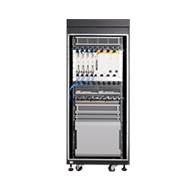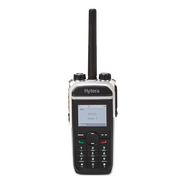Background
Abu Dhabi Ports Company (ADPC) and China's COSCO SHIPPING Ports (CSP) opened the CSP Abu Dhabi Container Terminal on 10 December 2018 at Khalifa Port. This state-of-the-art terminal has facilities for full and partial bonded container shipments, the full range of container packing services, short-term warehousing for de-consolidated cargo, as well as easy connectivity with other container terminals in Khalifa Port.
Khalifa Port, strategically located halfway between Abu Dhabi and Dubai, was officially inaugurated on 12 December 2012 by the President of the UAE, His Highness Sheikh Khalifa bin Zayed Al Nahyan. The deep-water port is the first semi-automated container port in the GCC (Gulf Cooperation Council) region. Owned by ADPC and operated by Abu Dhabi Terminals (ADT), the port handles general cargo, containers, roll-on and roll-off (RoRo) cargo, as well as providing break-bulk activities.
Challenge
The CSP terminal has a design capacity of 2.5 million TEU (Twenty-Foot Equivalent Unit - the size of a standard 20ft long, 8ft high container) and will begin with a handling capacity of 1.5 million TEU. The port has 1,200 meters of quay. The water depth of the terminal is 16.5 meters, allowing it to accommodate mega-vessels typically carrying in excess of 20,000 TEU. The semi-automated container terminal includes the largest container freight station in the Middle East, covering 275,000 square meters.
The sheer size and scale of the port throws up considerable challenges when it comes to ensuring security and enabling smooth operations across the huge site. A reliable communications network is essential to efficiently coordinate the many types of activity across the terminal.
The authorities at Khalifa Port have already deployed a private communications network, which has been in use for some years. This still provides useful communications, especially to the port's large fixed assets such as the quay cranes and buildings.
However, the number of different operational activities at the port and the increasing complexity of the activities meant that the existing communications network was struggling to cope with the demands. A more reliable, enhanced network was required to provide better signal coverage and radio capacity across the site.
Solution
The goal was to provide new wireless technology that would enable the port authorities to ensure security across all the cargo handling areas and port facilities. The new solution also needed to deliver effective and reliable communications to enable staff at the port to carry out their multiple different roles efficiently and safely, thereby boosting overall port productivity.
Hytera's solution was to deploy a DMR Tier III Trunking network based on its DS-6210 DMR Trunking Pro infrastructure, along with DMR MD785 mobile radios and DMR PD685 hand portable radios. The solution is designed to provide increased network capacity capable of handling the increasingly heavy traffic loads, along with delivering wide and reliable coverage with a high degree of network stability.
The DS-6210 DMR Trunking Pro solution features an all-IP architecture, centralized networking and a modular design. It is a cost effective solution designed to provide high spectrum efficiency, wide coverage, flexible networking and high levels of security.
It is also very scalable and achievable, if the customer needs to expand the system. For example, one Hytera mobile switching office (MSO) can support up to 512 base stations and 2,048 carriers. Each base station can support up to 48 carriers.
Results
Staff at the CSP Abu Dhabi Container Terminal now benefit from extended coverage across the port with advanced voice calls and a wide range of versatile services. The DMR Trunking Pro solution provides the port authority with a powerful dispatching capability, which helps to boost efficiency and ensure the smooth running of the complex operations within the port area.
Also this project is following the Belt and Road Initiative, which can improve the connectivity and cooperation among China and Abu Dhabi.




